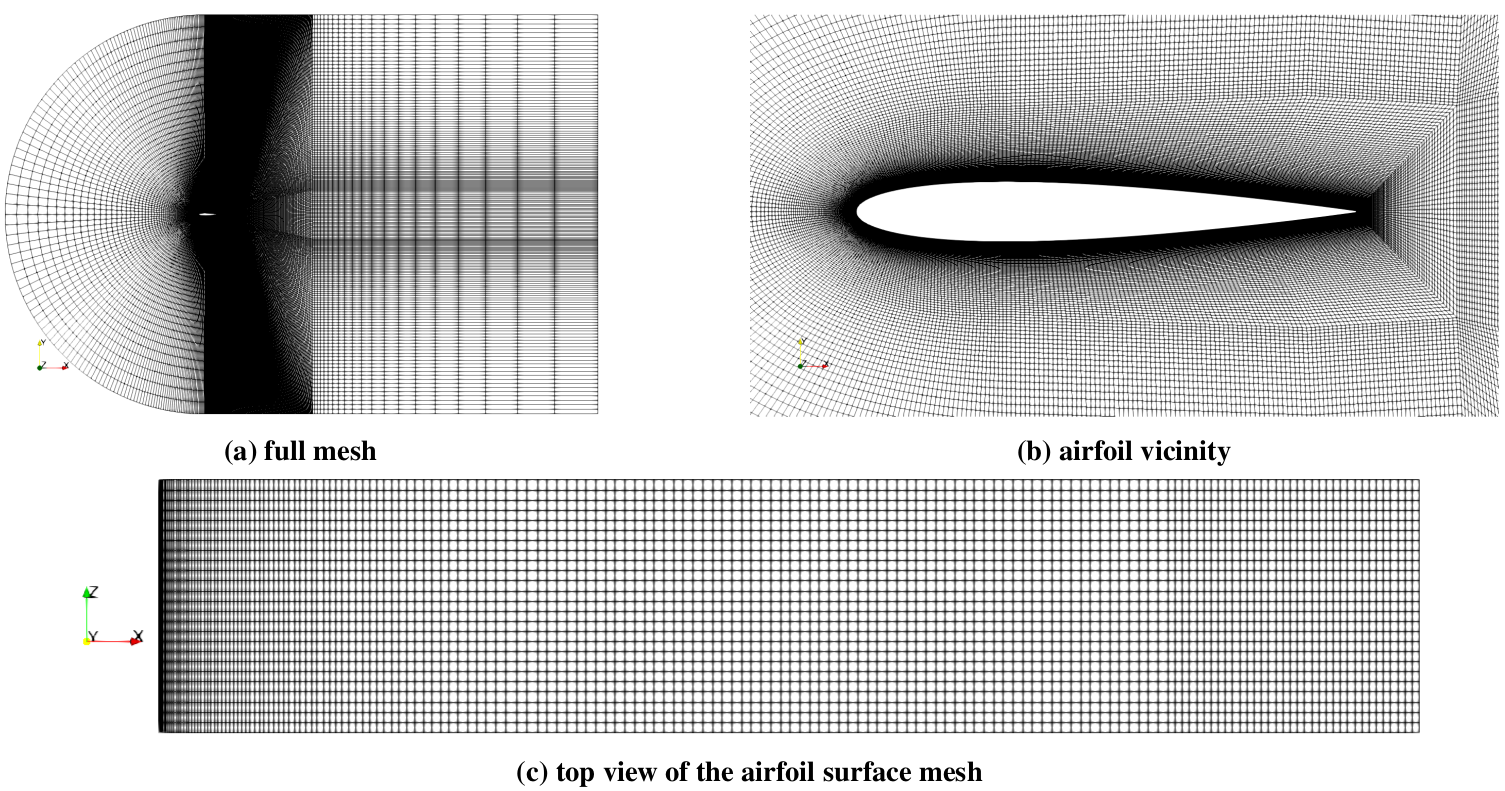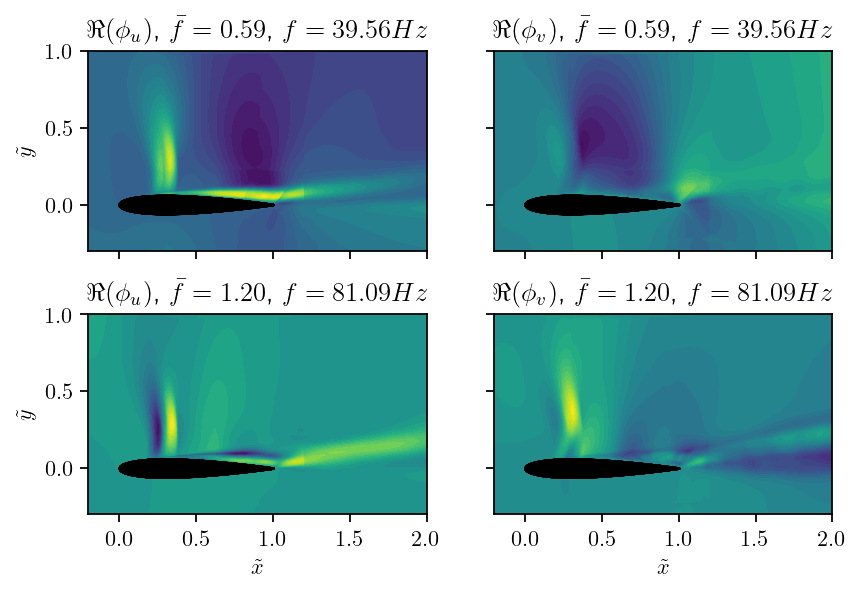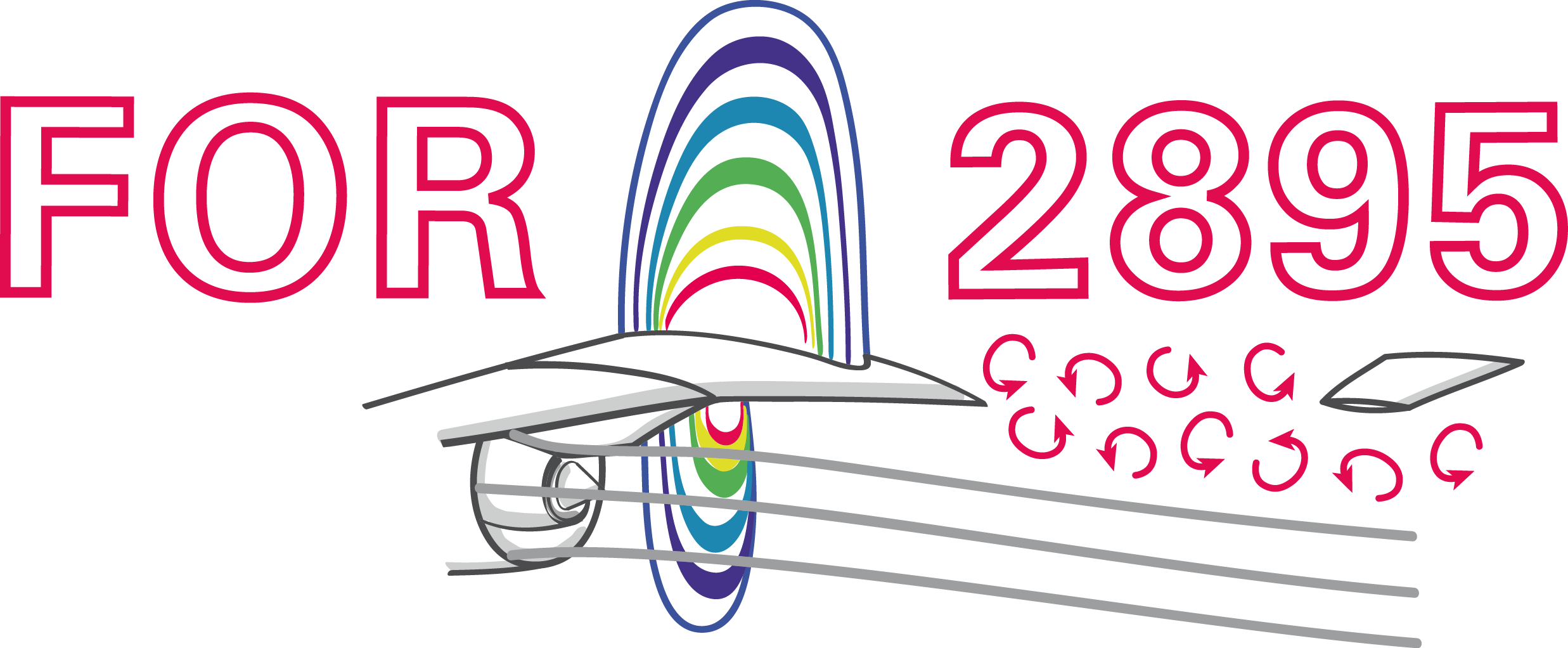Simulation and modal analysis of transonic shock buffets on a NACA-0012 airfoil
Andre Weiner, Richard Semaan
TU Braunschweig, ISM, Flow Modeling and
Control Group
AIAA SciTech Jan. 7, 2022
Copyright © by Andre Weiner and Richard Semaan, TU Braunschweig. Published by the American Institute of Aeronautics and Astronautics, Inc., with permission.Outline
- A brief literature survey
- Simulation approach
- Dynamic mode decomposition
- Results
- Summary and outlook
A brief literature survey
Contradictions in literature about:
- onset angle of attack
- shock position
- buffet frequency
- dependency on $Ma_\infty$ and $\alpha$
- ...
Main issues:
- high sensitivity to model constants
- incomplete/missing description
- no access to implementation details
Goal: workflow that is fully
- open-source
- reproducible
- transparent
Simulation approach
Simulation approach in a nutshell:
- OpenFOAM-v2012
- rhoCentralFoam
- IDDES turbulence modeling
- Spalart-Allmaras closure
- 2D and 3D simulations

Various views of the computational mesh.
Dyanmic mode decomposition
Definition of data matrices:
$$ \mathbf{X} = \left[ \begin{array}{cccc} | & | & & | \\ \mathbf{x}_1 & \mathbf{x}_2 & ... & \mathbf{x}_{N-1} \\ | & | & & | \\ \end{array}\right],\quad \mathbf{X}^\prime = \left[ \begin{array}{cccc} | & | & & | \\ \mathbf{x}_2 & \mathbf{x}_3 & ... & \mathbf{x}_{N} \\ | & | & & | \\ \end{array}\right] $$
$\mathbf{x}_n$ - state vector snapshot at timestep $n$
DMD in a nutshell:
- $\mathbf{X}^\prime = \mathbf{A} \mathbf{X}$
- $\mathbf{A} = \mathbf{\Phi\Lambda\Phi}^{-1}$
- $\mathbf{\Phi}$ - DMD modes
- $\mathbf{\Lambda}$ - yields freq., stability
Key difference to previous studies:
- volume-weighted state vector
- thermodynamic variables in state vector$^*$
$$ \mathbf{x}_n = \left[ \mathbf{u}_n, \mathbf{v}_n,\mathbf{w}_n, 2\mathbf{a}_n/\left(\gamma -1\right) \right]^T $$
$^*$ Rowley et al. 2004; $\gamma$ - adiabatic index, $a$ - local speed of sound, $u/v/w$ - velocity components
Practical DMD details:
- about 250 snapshots per cycle
- >3 cycles
- $-1 \le x/c \le 3$; $-1 \le y/c \le 1$
- only slice at $\tilde{z}=0$
- flowTorch for data processing and DMD
Results
Setup motivated by exp. investigations of McDevitt and Okuno 1985:
- NACA-0012 airfoil
- $Re_\infty = 10^7$
- $Ma_\infty = 0.75$
- pre-onset: $\alpha = 2^\circ$
- post-onset: $\alpha = 4^\circ$
Pressure coefficient $c_p$ at pre-onset conditions, $\alpha = 2^\circ$.
Pressure coefficient $c_p$ at post-onset conditions, $\alpha = 4^\circ$.
Local Mach number $Ma$, 2D, $\alpha=4^\circ$.
Slice of local Mach number $Ma$, 3D, $\alpha=4^\circ$.
DMD spectrum for 2D and 3D datasets/simulations; $\bar{f}=2\pi c f/U_\infty$.

Real parts of DMD buffet mode and first harmonic; $u$ and $v$ are the velocity components.
DMD mode at approx. $20f_{buffet}$, $u$-component.
Summary and outlook
Summary
- 3D simulations yield more realistic results
- volume-weighted state vector
- thermodynamic variables in state vector
- workflow and data publicly available
- further 3D investigations
https://github.com/AndreWeiner/naca0012_shock_buffet
THE END
Thank you for you attention!

{a.weiner|r.semaan}@tu-braunschweig.de
